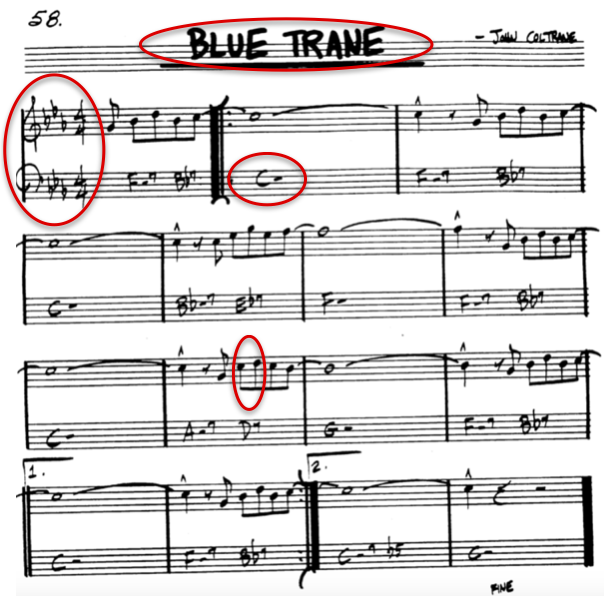Fake Books & Lead Sheets
A Fake Book (also called a Real Book) is a collection of lead sheets used by Jazz musicians. They are so-called because they allow a Jazz musician to ‘fake it’ even if he/she doesn’t know a song.
Lead sheets contain the skeleton of the song, specifically the:
- Basic Melody; and
- Basic Chord Progression; and
- NOTHING ELSE!
They are designed for ease. Sight reading a lead sheet is much easier than sight reading a full written out transcription or score. A lead sheets simplicity is its greatest strength.
Problems with Lead Sheets
But the greatest strength of a lead sheet is also its greatest weakness. Lead sheets are by definition incomplete, they contain the following problems:
- They only show the basic melody – NO harmony or embellishments.
- They only show the basic chords – NO substitutes or alterations.
- The chord written out on the lead sheet may not necessarily be the actual chord used in the recording.
- Lead sheets use simplified chords – they may write a CMaj7 instead of a CMaj9#11.
- And they don’t deal well with Modern Jazz and ‘non-standard’ harmony.
- Lead sheets simplify complex chords and just show you an approximation of the ‘real’ chord.
- For example, in the song Iris by Wayne Shorter the lead sheet indicates an A♭Maj7#5, while the recording uses a more complex A♭Maj7#5, ♮5 chord.
- Lead sheets do not contain Chord Voicings.
- For example, a lead sheet won’t tell you to use Quartal Voicings over a Modal Jazz song.
- Lead sheets do not contain Vamps/Riffs/Ostinati.
- Some Jazz songs have a classic vamp or riff that is integral to the song (such as Take Five by Paul Desmond, or Watermelon Man by Herbie Hancock). You generally won’t get this from a lead sheet.
- Lead sheets (at least the original ones) contain errors.
- Desafinado by Jobim is missing 4 measures after bar 32.
- Orbits by Shorter has the melody and chords written out in the lead sheet, but the recording itself doesn’t actually have chords at all.
- And then there’s Blue Train by Coltrane…

Errors:
- The title is wrong (it should be Blue Train)
- The chords are wrong (they should be V7#9 chords, NOT m7 chords)
- The melody is wrong (two notes in bar 8)
- The key is wrong (it was transposed from an E♭ Blues to a C Blues for no particular reason)
- The Vamp is not stated
History
The original Fake Books, released in the 1970’s, have lots of mistakes and were illegal because they didn’t pay royalties to the copyright owners. The more recent Fake Books are of a much higher quality – they aren’t illegal and there are fewer, if any, mistakes. But the earlier ones are still widely available and widely used.
Lots of Jazz musicians are disparaging of ‘lead sheet’ players because:
- Using a lead sheet means you aren’t forced to memorise a song.
- Lead sheets can be used as a musical ‘crutch’ – and your playing can become boring and repetitive if you rely on them too much.
Now, of course, listening and transcribing a song from an actual recording is much better, but I personally don’t see a problem in using lead sheets. As long as you don’t completely and solely rely on the lead sheet, and you do actually have a listen to the actual song to hear what’s going on. Take lead sheets with a grain of salt and treat them as but one of many possible resources.
How to Use a Lead Sheet
So in summary, below is a brief list summarising how to use a lead sheet. Make sure you follow these tips/rules/advice.
- NEVER play them exactly as written!!!
- ALWAYS LISTEN to the recording
- Harmonise/Embellish the melody as necessary (see second video below for a demonstration)
- Substitute/Alter the chords as necessary (Reharmonization)
- Add Chord Voicings as necessary
- Add Vamps/Riffs/Ostinati as necessary
- Be mindful of errors
How to Use a Lead Sheet
How to Build a Melody from a Lead Sheet